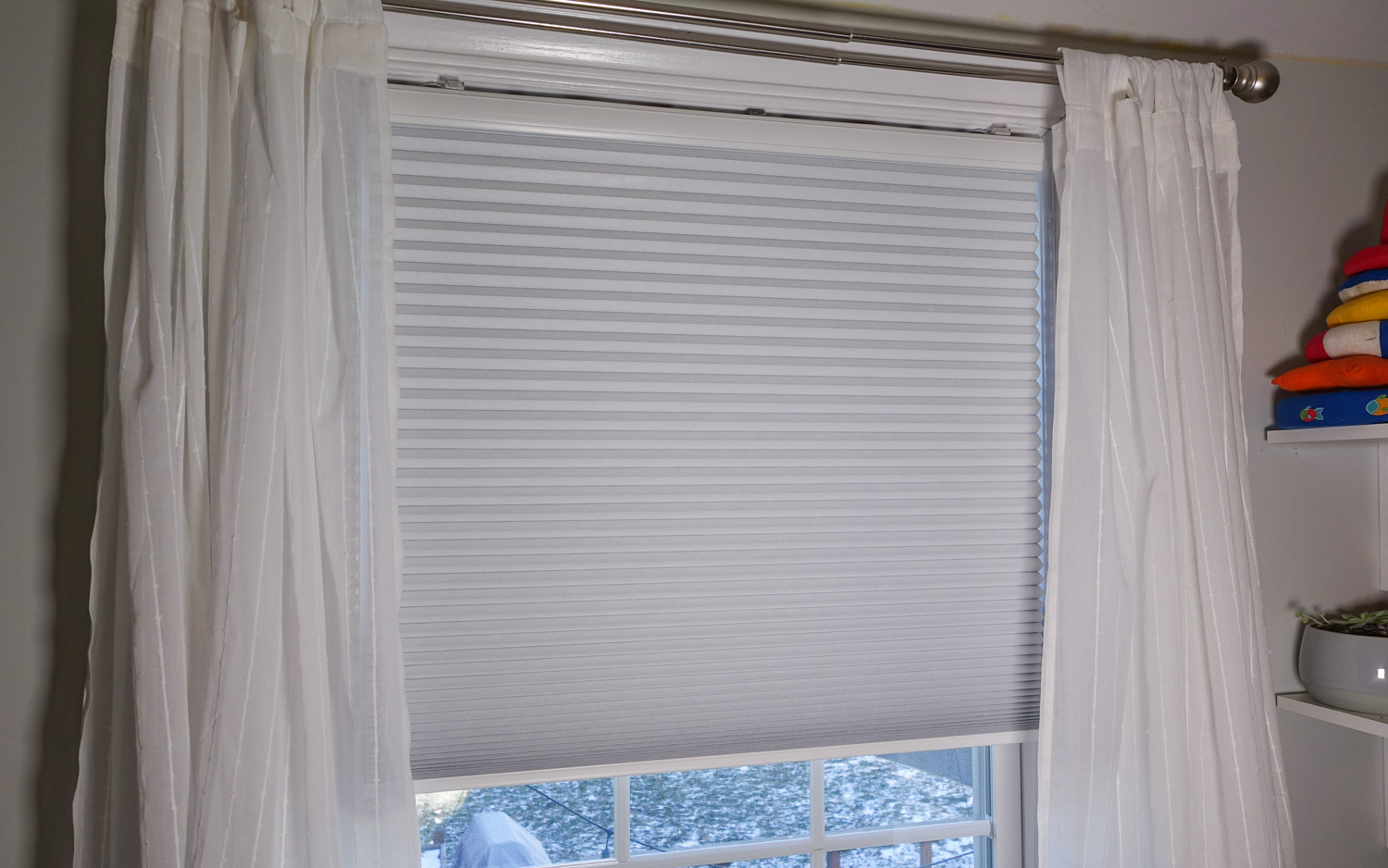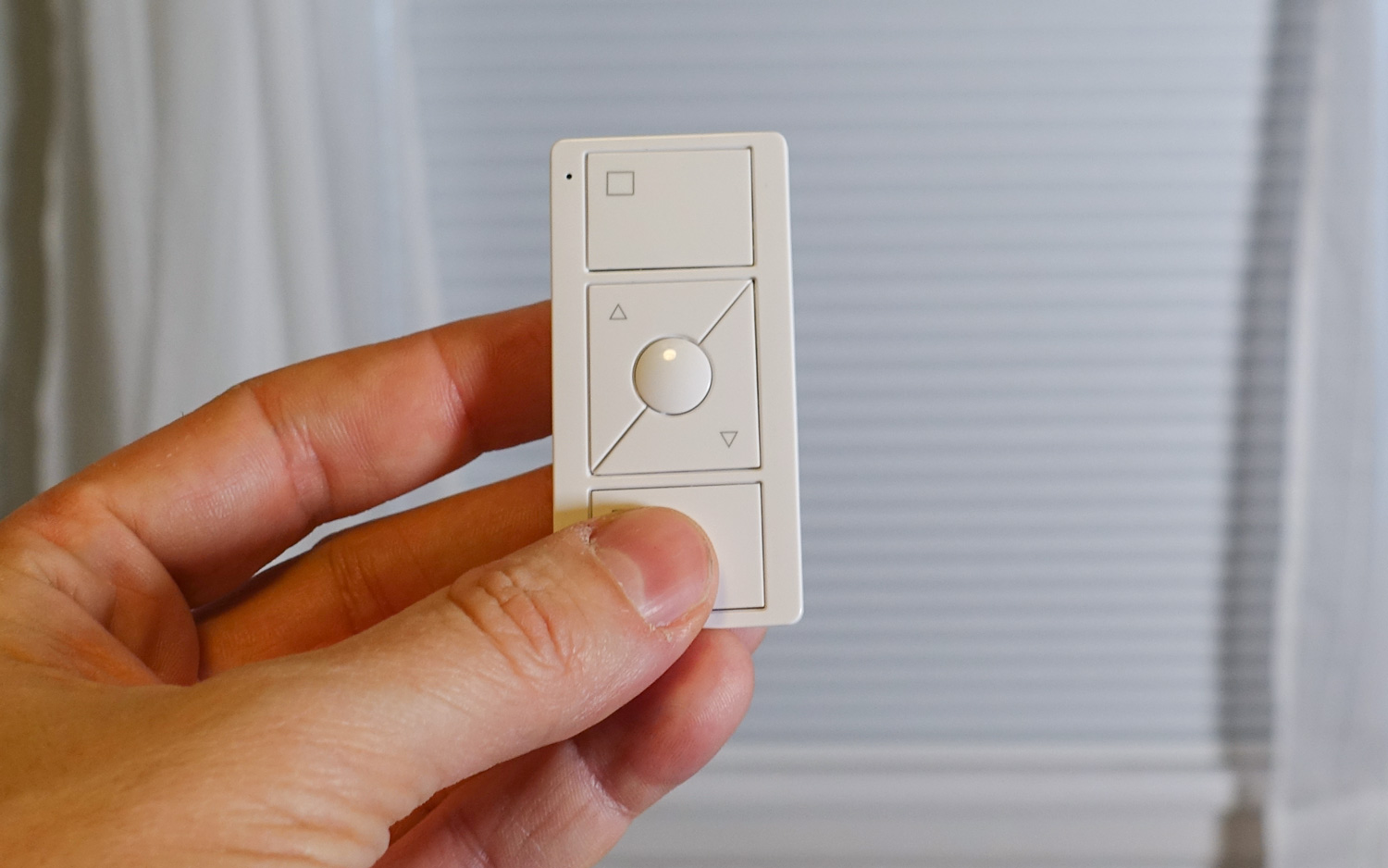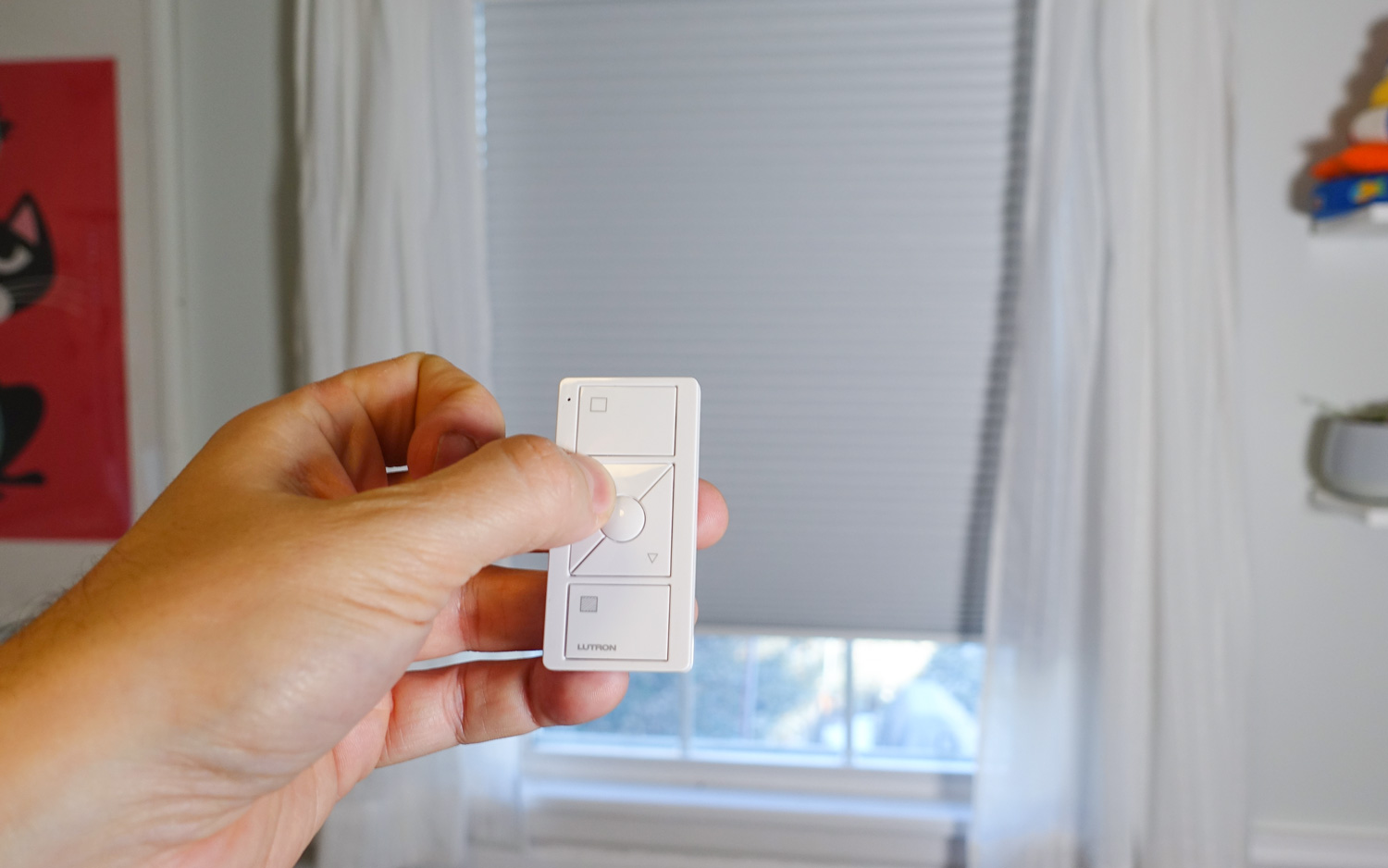Tom's Guide Verdict
They work well and look great, but Lutron's Serena smart shades are really expensive.
Pros
- +
Works with Alexa, Google Home, and HomeKit
- +
Robust feature set
- +
Easy to install
- +
Cordless
Cons
- -
Expensive
- -
Wi-Fi bridge required
Why you can trust Tom's Guide
Smart lights are handy for adding illumination when it's dark, but what if you want to let the sun do the work? Lutron's Serena smart shades aren't cheap by any stretch, but they let you further automate your home's devices. They're well-thought-out shades, but their price will keep them out of reach for most. For other home-automation gadgets, be sure to check out our best smart home devices page.
Configurations and Cost
When ordering the shades online at Lutron's website you get myriad options, including shade type (honeycomb or roller), fabric (there are 150 types), opacity and color. Keep in mind, though, that choosing textured fabrics and colors other than white will cause the price of the blinds to quickly skyrocket.
Options include whether you want to get shades that need to be plugged in or ones that run on D-cell batteries. I chose the latter, mainly for aesthetic reasons: I didn't want a cord dangling from the top of my window. Batteries should last from two to four years, depending on the model of shade you select.
Unlike traditional shades, Lutron's Serena smart shades don't have exterior cords to raise and lower them. While this means you can only control them using an app or a remote, it also means that a child will not be able to accidentally strangle themselves.
The biggest knock on these shades is that they’re expensive. The two shades I tested, which measured about 34 inches wide by 42 inches long, cost about $850 total — and that was with the least expensive options selected.
The biggest knock on Serena smart shades is that they're expensive.
If you don't have any other Lutron products (such as its Caseta smart plugs), you'll also need a Lutron Caseta bridge ($80) to connect the shades to your Wi-Fi network.
MORE: Best Smart Home Hub
Get instant access to breaking news, the hottest reviews, great deals and helpful tips.
Lutron custom-builds the shades, then ships them to your home. It takes about 15 business days for the shades to be built, and then another one to five days to ship them. It took a little less than four weeks for me to receive mine after I placed the order.
Setup and Installation
Once the shades arrived, I found it pretty easy to install them. First, I had to drill four holes into my window frame to attach the brackets. After that, I inserted the batteries into the shades (my two shades each took six D-cell batteries), and then snapped the shades into the brackets.

Even if you aren't very handy, installing Serena smart shades should take no more than 30 minutes.
Next, I had to connect the Lutron Bridge to my router with the included Ethernet cable, though I wish the company would develop a Wi-Fi version. Then, I paired the shades with the bridge in the Lutron app (Android and iOS).
Even if you aren’t very handy, installation should take no more than 30 minutes.
I also opted to get a pico remote ($25), which let me raise and lower the shades without needing to open the app on my phone. The remote is tiny — the size of a pack of gum — but it has buttons that can raise and lower the shades as well as adjust the shades to your desired height. You can pair the remote with a single shade or have it control all the shades in a single room.
Performance
Once installed, the shades responded nearly instantly to both the app and the remote. There's a low whirring sound as the shades go up and down, but it's quiet enough that it won't wake, say, a sleeping baby. My cat looked up in interest the first time the shades moved, but then went back to his nap. It's pretty cool to watch them move up and down on their own.

Lutron has been very good about integrating its smart-home products with other services; not only do the Serena shades work with Alexa, Google Assistant, SmartThings and Apple's HomeKit, but you can also pair Lutron's products with thermostats from Honeywell, Nest, Carrier, and Ecobee, as well as Sonos systems.
Lutron has been very good about integrating its smart-home products with other services.
So, for example, if the Nest Protect detects smoke or fire, the Lutron app can automatically turn on all your lights and raise your window shades. Or, if you have a Nest Cam, it can turn on your Lutron-connected lights if the camera sees a person while you're away.

Somewhat confusingly, the Alexa app only has on-screen controls for "Off" or "On," which raises or lowers the blinds completely, but you can also say "lower shades 50 percent," and they’ll close halfway.
I could also group the Serena shades with other devices, so that when I say "Alexa, Goodnight," the shades would drop down, the lights would turn off and the thermostat would lower its temperature.
MORE: Our Favorite Smart Home Gadgets and Systems
Using IFTTT, you can also create a scenario where the shades will automatically lower if your smart thermostat rises above a certain temperature.
Bottom Line
Easy setup and robust features makes Serena smart shades a great addition to any smart home. I liked that I could control them not just with Lutron's app and remote, but with a host of other smart-home systems, too. However, unlike a smart plug or light bulb that might cost $50 tops, smart shades are a serious investment.
There aren't many competitors in the smart blinds space. MySmartBlinds cost about half as much for a similar-size shade, but you can pick only one style of shade, with just two color options. They also work only with Alexa and Google Assistant — which admittedly may be enough for most consumers. Ikea is bringing some smart shades to the U.S. in April, so it may be worth the wait to see how much they’ll cost, and how well they work.
More than many other smart-home devices, smart shades feel like a "nice to have" product rather than a must-have. Unlike lights, which get turned on multiple times a day, how often do you raise or lower your blinds? Lutron Serena shades look and work great; it's just a shame that they're so expensive.
Credit: Tom's Guide

Michael A. Prospero is the U.S. Editor-in-Chief for Tom’s Guide. He oversees all evergreen content and oversees the Homes, Smart Home, and Fitness/Wearables categories for the site. In his spare time, he also tests out the latest drones, electric scooters, and smart home gadgets, such as video doorbells. Before his tenure at Tom's Guide, he was the Reviews Editor for Laptop Magazine, a reporter at Fast Company, the Times of Trenton, and, many eons back, an intern at George magazine. He received his undergraduate degree from Boston College, where he worked on the campus newspaper The Heights, and then attended the Columbia University school of Journalism. When he’s not testing out the latest running watch, electric scooter, or skiing or training for a marathon, he’s probably using the latest sous vide machine, smoker, or pizza oven, to the delight — or chagrin — of his family.

